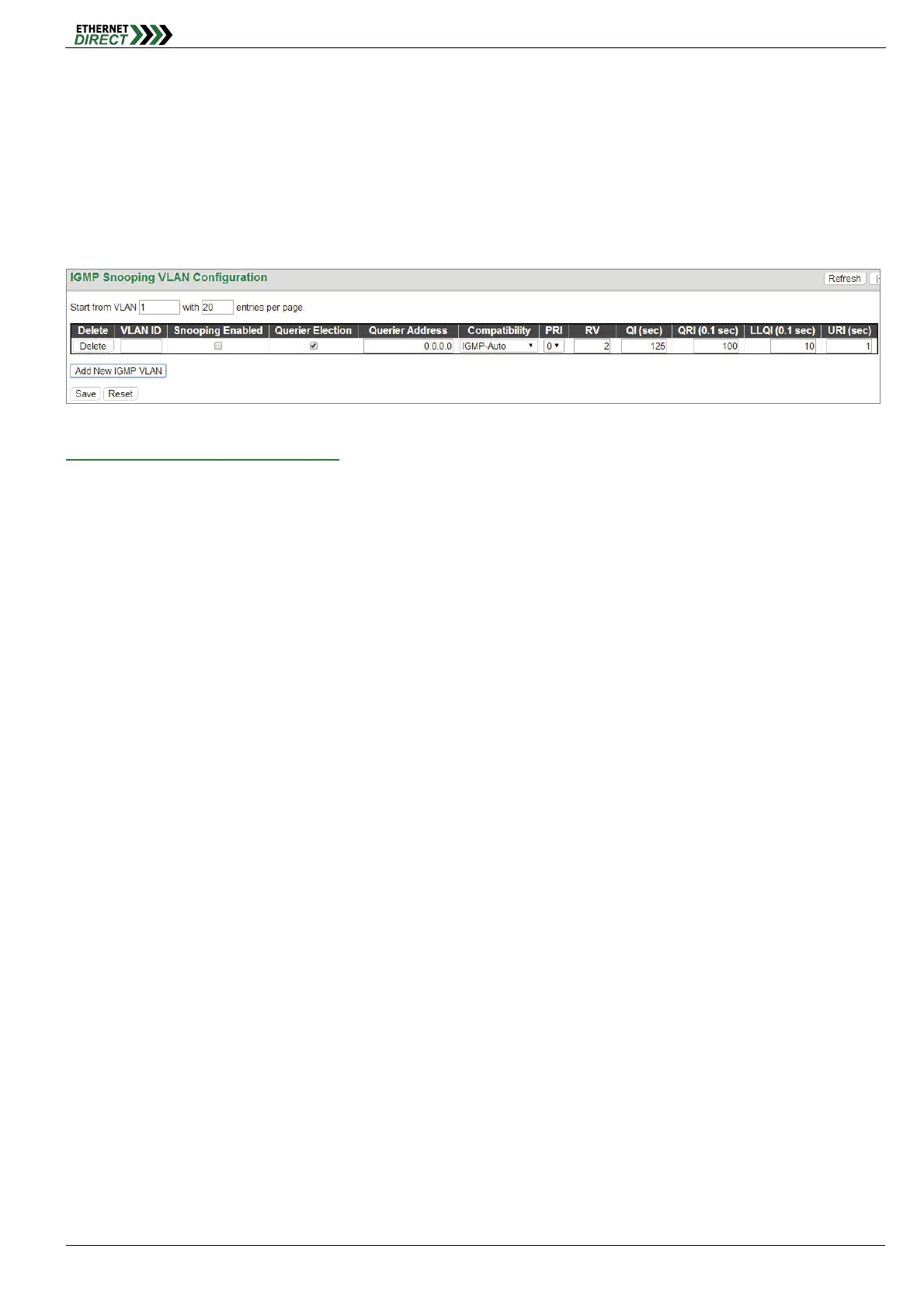IPMC
HMG-838PT & HMG-838EPT Web Configuration 10-3
the maximum number is reached on a port, any new IGMP join reports will be dropped. By default, unlimited is
selected. Other allowed options are 1~10
10-1.2 VLAN Configuration
This page is used to configure IGMP Snooping for an interface.
Click the “Add New IGMP VLAN” button to add a new entry.
IGMP Snooping VLAN Configuration:
VLAN ID: Specify VLAN ID for IGMP snooping.
Snooping Enabled: Select the checkbox to enable snooping feature on an interface basis. When enabled, the
switch will monitor network traffic on the specified interface to determine which hosts want to receive multicast
services. If IGMP snooping is enabled globally and an interface’s IGMP snooping is enabled on an interface,
IGMP snooping on an interface will take precedence. When disabled, snooping can still be configured on an
interface. However, settings will only take effect until IGMP snooping is enabled globally.
Querier Election: Enable to join querier election in the VLAN. When disabled, it will act as an IGMP non-querier.
Querier Address: Specify the IPv4 unicast source address used in IP header for IGMP querier election. When the
field is not specified, the switch uses the first available IPv4 management address of the IP interface associated
with this VLAN.
Compatibility: This configures how hosts and routers take actions within a network depending on IGMP version
selected. Available options are “IGMP-Auto”, “Forced IGMPv1”, “Forced IGMPv2”, “Forced IGMPv3”. By default,
IGMP-Auto is used.
PRI: Select the priority of interface. This field indicates the IGMP control frame priority level generated by the
system which is used to prioritize different classes of traffic. The allowed range is 0 (best effort) to 7 (highest). By
default, interface priority value is set to 0.
RV: The robustness variable (RV) allows tuning for the expected packet loss on a subnet. If a subnet is
susceptible to packet loss, this value can be increased. The RV value must not be zero and should not be one.
The value should be 2 or greater. By default, it is set to 2.
QI (sec): The Query Interval is the interval between IGMP General Query messages sent by the Querier. The
default Querier Interval is 125 seconds.
QRI: The Query Response Interval is the maximum amount of time that the IGMP router waits to receive a
response to a General Query message. The QRI applies when the switch is acting as the querier and is used to
inform other devices of the maximum time this system waits for a response to general queries. By default, RQI is
set to 10 seconds. The allowed range is 0~31744 tenths of a second.
LLQI: The Last Listener Query Interval sets the interval that waits for a response to a group-specific or
group-and-source specific query message.
URI: The Unsolicited Report Interval is the amount of time that the upstream interface should transmit unsolicited
IGMP reports when report suppression/proxy reporting is enabled. By default, URI is set to 1 second. The allowed
range for URI is 0 -31744 seconds.
